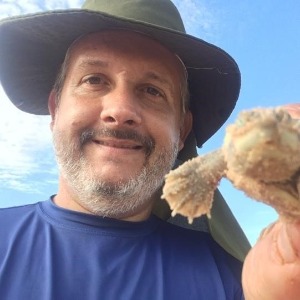Title : Tropical aquaponic production of lemon balm, Melissa officinalis, using different Astyanax bimaculatus fingerlings stocking densities
Abstract:
Aquaponic systems are a branch of recirculating aquaculture technology in which plant crops are included to either diversify the production of a business, to provide extra water filtration capacity, or a combination of the two. The relationship of the constituent organisms of aquaponics, fish, plants and microorganisms need to be in biological harmony to favor the maximum performance of the species. Lemon balm (Melissa officinalis), a food and medicinal plant, in addition to Astyanax bimaculatus are species that can add value to aquaponic final products. The experiment was carried out between August 24th and October 14th 2020, totalizing 51 days of cultivation, in 15 identical aquaponic systems installed in a greenhouse at the Sustainable Aquaculture Center at Fazenda Água Limpa, FAL, from the University of Brasília - UnB, Brazil. The study has been approved by institutional animal ethics committee of the University of Brasília (CEUA/UnB protocol code 115/2019 of August 20th, 2020) for studies involving animals. The aquaponic systems rely on an ebb-and-flow water pattern, with one loop. The experimental design, completely randomized, consisted of five treatments (one of them being the control) with three repetitions, being differentiated by fish stocking densities, totalizing fifteen aquaponic units.
The present experiment tested five treatments differing by stocking densities of A. bimaculatus fingerlings (0.0, 0.1, 0.2, 0.3 and 0.4 fish L-1; T1, T2, T3, T4 and T5, respectively) in association of lemon balm, at constant density (24 plants m-2), in media bed aquaponic systems installed in a greenhouse. The experimental design was completely randomized with three replications for each treatment, totalizing 15 aquaponic systems analyzed. The results showed that, for fish growth, T2 was the one that presented the best performance results, followed by T3 and T4, and finally T5, while for plants it was T3, followed by T4 and T5, which did not showed differences between them, followed by T2 and T1, lastly. In all treatments, animal and plant growth were observed. The studied aquaponic systems demonstrated their viability for the production of the species presenting satisfactory results, which can be interesting for further studies and producers.


